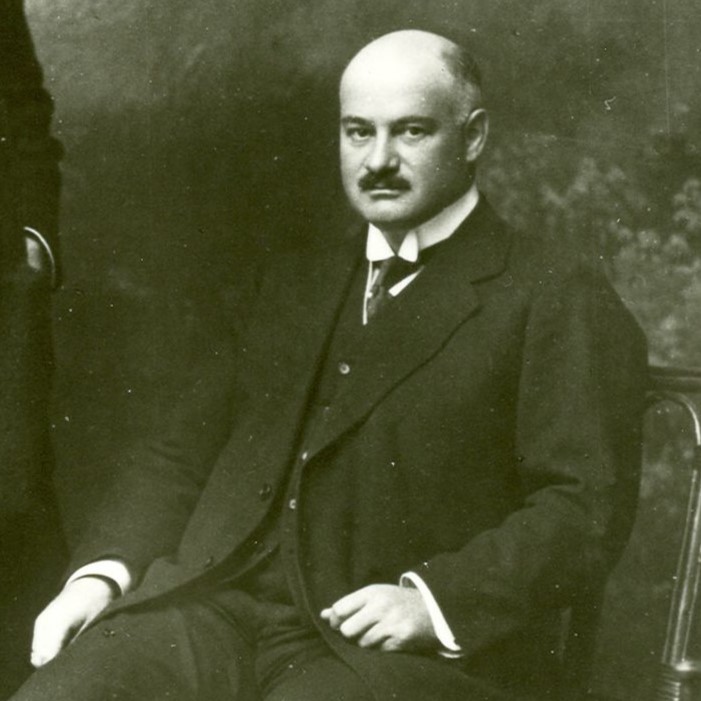He took his wife's surname, making it one of the biggest brands in the pharmaceutical industry: Fritz Hoffman – La Roche
It was founded on October 1, 1896 by Fritz Hoffman – La Roche, who was one of the first to realize that the industrial production of standard drugs would be a significant advantage in combating diseases. Today, it employs over 100,000 people and sells its products in more than 150 countries.

It was founded on 1 October 1896 by Fritz Hoffmann-La Roche in Switzerland. It soon opened branches in Germany (1898), Italy (1898), France (1903), USA (1905), England (1908) and Russia (1910).
He was initially known for his vitamin preparations. From 1957 it introduced tranquilizers from the benzodiazepine class. It became a leader in this market by selling the acne medication isotretinoin under the Accutane and Roaccutane brands. It has also produced various HIV tests, antiretroviral drugs, and cancer drugs.
Its headquarters are in Basel, Switzerland. The company is owned by Roche Holding AG. As of 2005, half of Roche Holding shares were owned by the founding Hoffmann and Oeri families, while 33% was owned by Novartis, another pharmaceutical company of Swiss origin.
The story of Fritz Hoffmann-La Roche
Born in Basel, Hoffmann went to school in the city where he was born and then got an internship in a business. The 24-year-old deepened his knowledge of pharmacy after 1893, when his father made him a partner in the pharmaceutical company Bohny-Holliger & Cie. A year later, he added his wife's surname to his own, after he married Adele La Roche, the daughter of a Basel silk merchant. They had two sons; They divorced in 1918. Then, together with his partner Max Carl Traub, he took over the manufacturing business of the pharmacy in Basel.
The 26-year-old Hoffmann started working as an independent entrepreneur in pharmaceutical manufacturing within the framework of a limited company (Hoffmann, Traub & co.). When Traub left the company in 1896, they changed the name of their organization to F. Hoffmann-La Roche.
Since the German government granted only short-term patent protection to imported pharmaceutical products (including ready-made drugs), they established their first factory in Germany. The first drugs that made the company successful were the bactericidal sirolin and the digalen used in circulatory disorders.
The German company was followed by branches in Paris (1903), New York (1905), Vienna (1907), London (1909) and St Petersburg (1910). With the factory he established in Yokohama (Japan) in 1911, Hoffmann-La Roche also dared to jump into Asia. Before the outbreak of the first world war, the Swiss businessman had turned his business into a fully-fledged world company. As one of the first people in the industry, Hoffmann-La Roche understood the importance of pharmaceutical brand products that always show the same composition and effect. As a marketing specialist, he not only presented his papers to pharmacists and the public, but also addressed physicians and published his knowledge in medical journals. Apart from these, he was also publishing his own magazine, which was a complete innovation for Europe.
With the advent of the First World War, the company's heyday temporarily came to an end. The factory in Germany was operating on a very limited schedule, and its branches in other countries involved in the war were also losing money. With the outbreak of the October revolution, after 1917, the Russian market, which previously accounted for one-fifth of all its sales, suddenly disappeared altogether.
Faced with this situation, which endangered the existence of his business, Hoffmann-La Roche took the decision to turn his company into a joint stock company in April 1919 with a share capital of 4 million francs. At the same time, a new restructuring was initiated in the company. The tumultuous state of his company with the war took a toll on the medicine tycoon's health. He succumbed to kidney disease, which started in 1919, at the age of 52 in Basel. Hoffmann-La Roche did not see the rise of the company again.
